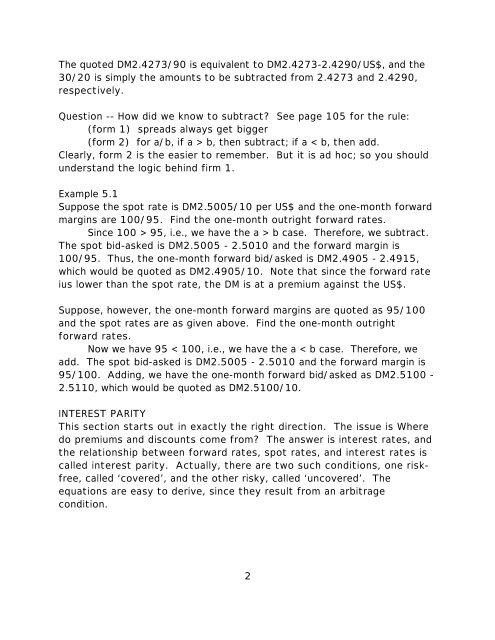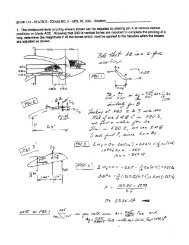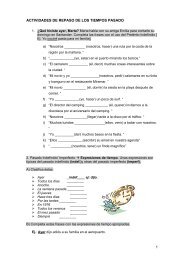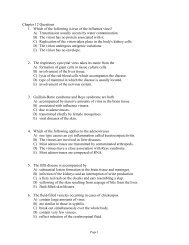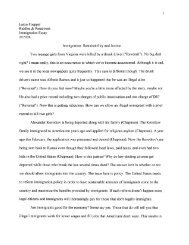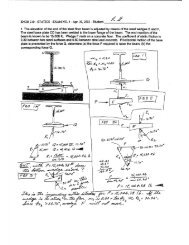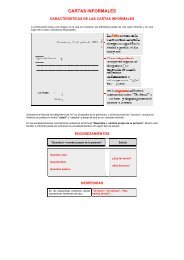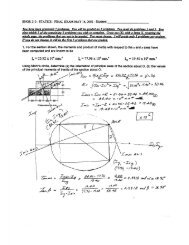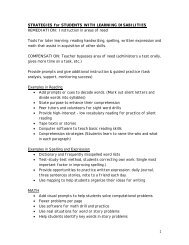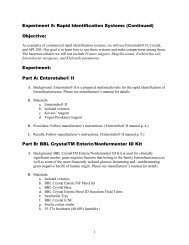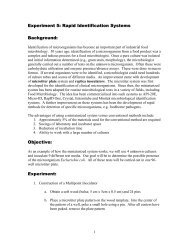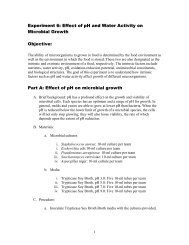B481/S98/NOTES/Grabbe-5 FORWARDS, SWAPS, AND INTEREST ...
B481/S98/NOTES/Grabbe-5 FORWARDS, SWAPS, AND INTEREST ...
B481/S98/NOTES/Grabbe-5 FORWARDS, SWAPS, AND INTEREST ...
You also want an ePaper? Increase the reach of your titles
YUMPU automatically turns print PDFs into web optimized ePapers that Google loves.
The quoted DM2.4273/90 is equivalent to DM2.4273-2.4290/US$, and the<br />
30/20 is simply the amounts to be subtracted from 2.4273 and 2.4290,<br />
respectively.<br />
Question -- How did we know to subtract See page 105 for the rule:<br />
(form 1) spreads always get bigger<br />
(form 2) for a/b, if a > b, then subtract; if a < b, then add.<br />
Clearly, form 2 is the easier to remember. But it is ad hoc; so you should<br />
understand the logic behind firm 1.<br />
Example 5.1<br />
Suppose the spot rate is DM2.5005/10 per US$ and the one-month forward<br />
margins are 100/95. Find the one-month outright forward rates.<br />
Since 100 > 95, i.e., we have the a > b case. Therefore, we subtract.<br />
The spot bid-asked is DM2.5005 - 2.5010 and the forward margin is<br />
100/95. Thus, the one-month forward bid/asked is DM2.4905 - 2.4915,<br />
which would be quoted as DM2.4905/10. Note that since the forward rate<br />
ius lower than the spot rate, the DM is at a premium against the US$.<br />
Suppose, however, the one-month forward margins are quoted as 95/100<br />
and the spot rates are as given above. Find the one-month outright<br />
forward rates.<br />
Now we have 95 < 100, i.e., we have the a < b case. Therefore, we<br />
add. The spot bid-asked is DM2.5005 - 2.5010 and the forward margin is<br />
95/100. Adding, we have the one-month forward bid/asked as DM2.5100 -<br />
2.5110, which would be quoted as DM2.5100/10.<br />
<strong>INTEREST</strong> PARITY<br />
This section starts out in exactly the right direction. The issue is Where<br />
do premiums and discounts come from The answer is interest rates, and<br />
the relationship between forward rates, spot rates, and interest rates is<br />
called interest parity. Actually, there are two such conditions, one riskfree,<br />
called ‘covered’, and the other risky, called ‘uncovered’. The<br />
equations are easy to derive, since they result from an arbitrage<br />
condition.<br />
2


